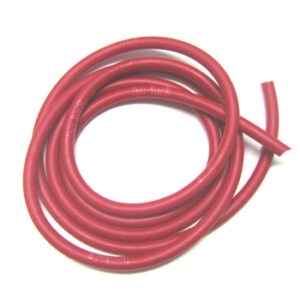Thigh Pain Diagnosis Guide
Updated:
Patients suffering from thigh pain are often seen in physiotherapy practice, particularly in individuals involved in sports participation. Pain may be caused by local structures within the thigh, or, may be referred from other sources (such as the lower back, hip or knee).
Sudden onset thigh pain often occurs in athletes or individuals involved in fast moving change-of-direction sports, kicking sports and those sports which involve rapid acceleration and deceleration (such as squash, tennis, football, soccer and basketball). The most common cause of sudden onset pain in the front of the thigh is a Quadriceps Strain (figure 1) whilst the most common cause of sudden onset pain in the back of the thigh is a Hamstring Strain (figure 2). In those patients with associated back, hip, buttock or knee pain, Referred Pain (frequently from the back, hip or sacroiliac joint) is often the cause of symptoms.
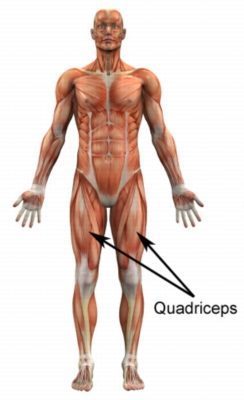
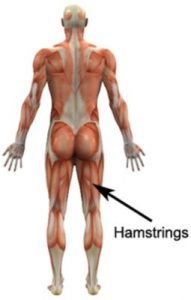
There are numerous other causes of thigh pain, some of which present suddenly due to a specific incident, others which develop gradually over time.
Below are some of the more common causes of thigh pain with a brief description of each condition to aid thigh pain diagnosis. Conditions have been organised according to sudden or gradual onset and common or less common conditions for ease of use.
Find out what may be causing your thigh pain:
Sudden Onset Thigh Pain – Common Conditions
Quadriceps Strain
Tearing of the quadriceps muscle (figure 1), typically during sprinting, jumping or kicking. Associated with localised pain in the front of the thigh, pain on firmly touching the affected region and often pain on performing a squat (figure 3) and pain or stiffness on performing a quadriceps stretch (figure 4).
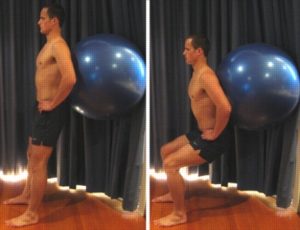
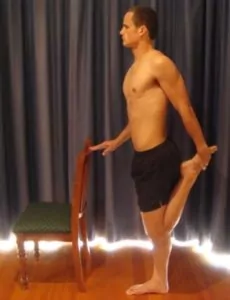
Hamstring Strain
Tearing of the hamstring muscle (figure 2), typically during sprinting, jumping or kicking. Associated with localised pain in the back of the thigh, pain on firmly touching the affected region and often pain or stiffness on performing a hamstring stretch (figure 5).

Quadriceps Contusion
Bruising of the front of the thigh (quadriceps – figure 1) following a direct impact from an object or person. Typically associated with pain on firmly touching the affected region and often pain or stiffness on performing a quadriceps stretch (figure 4).
Hamstring Contusion
Bruising of the back of the thigh (hamstrings – figure 2) following a direct impact from an object or person. Typically associated with pain on firmly touching the affected region and often pain or stiffness on performing a hamstring stretch (figure 5).
Referred Pain
Pain referred into the thigh from another source such as the lower back, hip or knee, frequently associated with symptoms above or below the thigh (such as the back, buttock, hip, knee, lower leg, ankle or foot). Typically associated with pain on firmly touching the region responsible for the referred pain and / or loss of movement in that region. Sometimes in association with pins and needles or numbness in the affected leg or foot.
Groin Strain
Tearing of one or more groin muscles, typically following a forceful kick or change-of-direction movement. Associated with pain on firmly touching the affected region and localised, one-sided groin pain, often aggravated by stretching the affected muscle (figure 6).

Less Common Sudden Onset Conditions
Avulsion Fracture
Fracture occurring due to excessive tension on a tendon where it attaches to the bone resulting in a bony fragment separating from the bone. More common in younger athletes. Associated with significant pain, swelling, loss of function and pain on firmly touching the affected region. May occur at a number of anatomical sites, most common at the bony prominence at the back of the pelvis where the hamstring tendon attaches (ischial tuberosity – figure 7) and the bony process at the front of the pelvis where the quadriceps tendon attaches (anterior inferior iliac spine – figure 8)
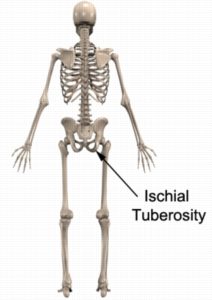
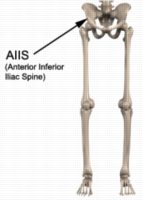
Femoral Shaft Fracture
A break in the thigh bone (femur – figure 9), which may occur due to severe trauma such as a fall from a height or motor vehicle accident. Pain is usually severe and often results in an inability to weight-bear. There may be visible deformity of the thigh bone and often significant swelling. Pain typically increases on firmly touching the affected region of the thigh and occasionally pins and needles or numbness may be present in the thigh, lower leg, ankle or foot.
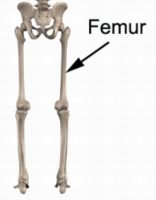
Slipped Upper Femoral Epiphysis
Disruption of the growth plate of the upper thigh bone at the hip joint. Usually occurs in older children (particularly between 12 and 15 years) either suddenly or, more commonly, gradually over time. The most common presentation is a limp. Often the only pain that is felt may be in the knee or thigh. Typically associated with reduced hip range of movement.
Perthes’ Disease
Damage to the bone and cartilage of the head of the thigh bone located in the hip joint. Occurs in children, usually between the ages of 4 and 10. Results in a limp or a dull ache in the thigh, groin or knee. Typically associated with reduced hip range of movement.
Gradual Onset Thigh Pain – Common Conditions

Members Only ContentBecome a PhysioAdvisor Member to gain full access to this exclusive content. For more details see Become a Member. Already a member? Login Now
Less Common Gradual Onset Conditions

Members Only ContentBecome a PhysioAdvisor Member to gain full access to this exclusive content. For more details see Become a Member. Already a member? Login Now
Thigh Pain Diagnosis
A thorough subjective and objective examination from a physiotherapist is usually sufficient to diagnose the cause of thigh pain. Investigations such as an X-ray, ultrasound, MRI, CT scan, bone scan or compartment pressure testing are often required to confirm thigh pain diagnosis and rule out other injuries.
Find a Physio
Find a physiotherapist in your local area who can assist with thigh pain diagnosis and treat patients suffering from thigh injuries.
More Information
- View Quadriceps Stretches.
- View Hamstring Stretches.
- View Quadriceps Strengthening Exercises.
- View Hamstring Strengthening Exercises.
- View detailed information on How to use Crutches.
- View detailed information on when to use Ice or Heat.
- View detailed information on initial injury management and the R.I.C.E. Regime.
- View detailed information on Do I Need Orthotics?
- View detailed information on Choosing a Shoe.
- View detailed information on a Return to Running Program.
Physiotherapy products for thigh pain
Some of the most commonly recommended products by physiotherapist for patients with thigh injuries include:
To purchase physiotherapy products to assist with rehabilitation click on one of the above links or visit the PhysioAdvisor Shop.

Link to this Page
If you would like to link to this article on your website, simply copy the code below and add it to your page:
<a href="https://physioadvisor.com.au/injuries/thigh”>Thigh Pain Diagnosis Guide – PhysioAdvisor.com</a><br/>PhysioAdvisor provides a thigh pain diagnosis guide for patients suffering from thigh injuries created by experienced physiotherapists.
Return to the top of Thigh Pain Diagnosis Guide.




